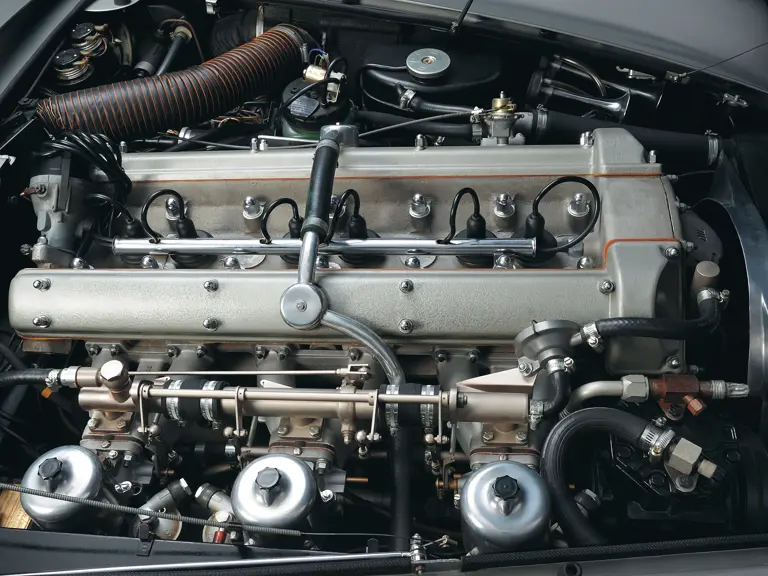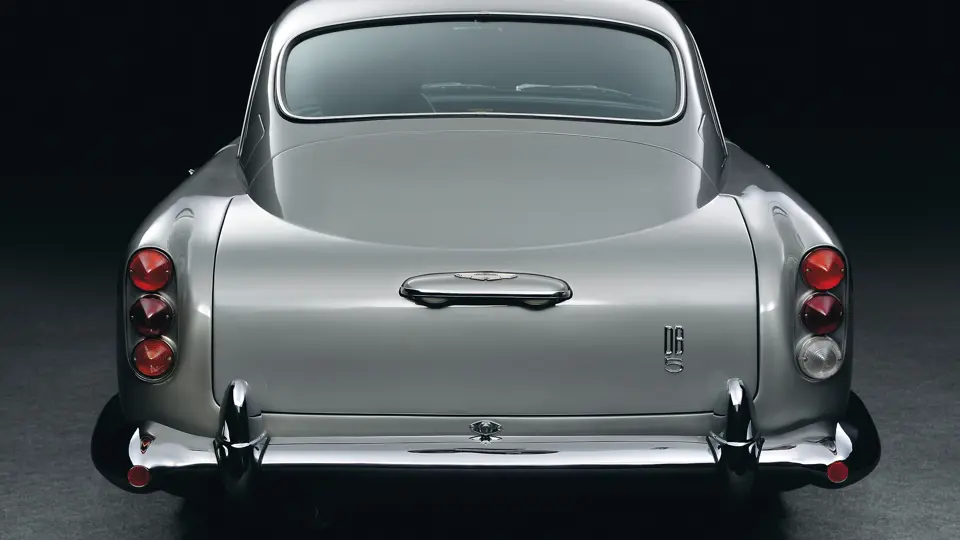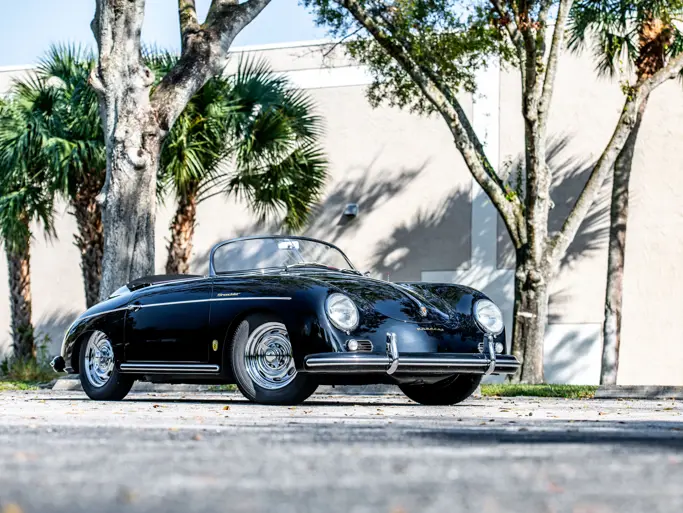282 hp, 3,995 cc DOHC inline six-cylinder engine, triple SU carburettors, ZF five-speed manual gearbox, independent front suspension with upper and lower control arms, coil springs, anti-roll bar, live rear axle with Watt linkage, radius rods and coil springs, and four-wheel hydraulic disc brakes. Wheelbase: 2,490 mm
• Offered from the Collection of a Swiss Gentleman
• A rare, original left-hand drive example equipped with factory air conditioning
• Accompanied by a copy of the original build sheet and a BMIHT certificate
• Offered for the first time from a significant private Swiss collection
Aston Martin developed and released the all-new DB4 in 1958 alongside the final DB2-derived DB Mark III. The following year the company received a Royal Warrant of Appointment from HRH Prince Philip and took both overall victory at Le Mans and the World Sports Car Constructor’s Championship the year after. A highly advanced design, the DB4 heralded the arrival of the brilliant new Tadek Marek-designed, all-aluminium 3.7-litre engine and a new platform-frame chassis, clothed in beautifully hand-formed aluminium coachwork designed by Touring of Milan and constructed using their patented Superleggera (super light) process. A huge advance, the DB4 evolved through five sub-variants and profoundly influenced the Aston Martin line through 1969 while nonetheless retaining the distinctive flavour of its predecessors.
The DB5 arrived in the autumn of 1963, essentially an advanced development of the “Series V” DB4 and distinguished primarily by its larger, more powerful four-litre engine, along with triple SU carburettors as standard. In standard tune, this engine was rated at 282 horsepower. After approximately the first 50 cars, the DB5 was upgraded with the sturdy, all-synchromesh ZF five-speed gearbox as standard equipment, in place of the David Brown-produced four-speed. The DB5 maintained the 98-inch (2,490-mm) wheelbase, pressed steel platform chassis, DOHC six-cylinder engine configuration and choice of four-seat coupé or convertible bodies of its predecessor.
The DB5 differed in many other respects as well. The Dunlop disc brakes were replaced with Girling units, and the suspension was significantly redeveloped with the front now adjustable for camber and the addition of Armstrong “Selectaride” dampers in the rear, along with a dash-mounted control to adjust stiffness to the driver’s taste. Most visually apparent, the trademark sloping front wings with covered headlights, first seen on the DB4GT, became a DB5 hallmark. The dash and gauges were also modified to include an oil temperature gauge, à la the DB4GT. In total, no fewer than 170 updates completed the transformation from the DB4 to the DB5. While it was produced for just over two years, the DB5 achieved lasting fame as certainly the most famous of all Aston Martins and arguably the most famous car of all time.
According to a copy of its original Aston Martin build sheet and a British Motor Industry Heritage Trust certificate, chassis DB5/1847-L, the original left-hand drive US-delivery example offered here, was completed on 23 November, 1964 and finished in Dubonnet with black upholstery. “Non Standard Equipment” included Normalair air conditioning, chrome road wheels, an engine breather, a power-operated radio antenna and a pair of detachable headrests. Just three days later, DB5/1847-L was bound for the USA and its original owner, one Leslie Pouch of Staten Island, New York, who eventually took delivery of the DB5 on 23 February, 1965.
Its passionate current owner eloquently describes the enduring significance of the DB5:
Unmistakable! It’s James Bond’s car in Goldfinger. The DB5 is so much part of Agent 007’s panoply that it even made a guest appearance around the year 2000 in a later Bond film. Except for the streamlined headlights smoothing the airflow at the front, a neat idea of the period, its bodywork appears largely the same as the DB4’s.
The DB5 is the Aston Martin line’s most sophisticated achievement. The next model, the DB6, was rather heavier, larger and more comfortable…It also capitalized on the market appeal generated by the James Bond saga. So the car sold very well indeed. But as the DB6 was built in larger numbers than the DB5, lighter and rarer, the latter is worth twice the price of a DB6 today. Their technology is the same but the difference between the two Aston Martins is the same as that between an evening gown and a daywear dress.
This Aston Martin was acquired in the past decade from a Swiss Aston Martin specialist, having previously belonged to a partner at Banque Syz. Kept since then in climate-controlled display alongside original examples of the DB4GT and DB4GT Zagato, it has required little more than routine maintenance. It is finished in Silver Birch with black leather upholstery and is Swiss registered. It is a very rare example indeed as approximately only a quarter of DB5 Coupés were left-hand drive.
A reduced import tax of 5% may be applicable to this car. For further explanation please speak with an RM representative.













 | London, United Kingdom
| London, United Kingdom









